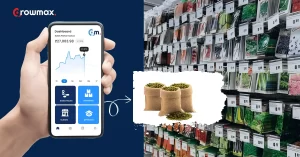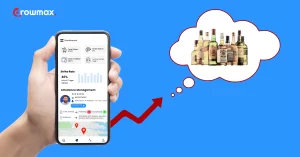Sales Force Automation (SFA) and Customer Relationship Management (CRM) are used and perceived interchangeably in the consumer goods market.
Both solutions are pivotal in dealing with business shortfalls related to sales or customer journeys.
The SFA tool can streamline all sales activities to bring forth efficient results.
On the other hand, CRM comes into the picture when beefing up customer relationships.
Let’s get into the in-depth understanding of Sales Force Automation vs CRM to get a fair view of ‘when’ and ‘why’ businesses in the consumer goods industry crave to onboard these solutions.
What is Sales force Automation?
Simply put, brands use the support of SFA to automate such time-consuming and unnecessary tasks executed manually by sales reps.
Further, it assists managers in making informed and structured decisions by getting them accurate with real-time insights.
The ultimate purpose is to cut down the inefficiencies of salesmen on the field and make them as productive as possible.
What problems does the SFA system resolve?
Here comes the role of SFA: to eliminate those tedious and monotonous tasks that waste away a huge chunk of salespeople’s time.
Repetitive tasks: CSO insights shockingly found that 64 percent of salespeople’s time goes towards clerical and paperwork, and the remaining 36 percent is spent on selling.
Sales process: Brands are still pursuing manual methods in the entire sales process, resulting in inefficiencies. For instance, missing a crucial follow-up with a high-valued lead leads to lost revenue.
However, sales reps get to look into their daily tasks, like whom they have meetings with, whom to take orders from, beat planning, etc, by just accessing the stunning dashboards of SFA.
Decision making: the journey of making structured and informed decisions is smooth and challenging if done manually. The data rounded up turns obsolete as it is not used up at the right time.
However, SFA has the feature of generating accurate and real-time information, making businesses bet on each opportunity they miss out on.
Customer Satisfaction: if any consumer goods brand fails to hand personalization in any of the offerings to their end-users, they will lose out in this competitive market.
This is where SFA pops in; it enables salespeople to access info about its customers and promptly addresses their needs to build loyalty.
What is CRM?
Consumer goods brands desire their customers to have marvelous experiences while interacting with them to make them come frequently.
The above remark is doable with the help of CRM, which manages relationships between brands and customers efficiently.
Although the CRM system is less bound than brands conceive, it can drive sales, improve customer retention, provide a 360-degree view of each customer, and so on.
Challenges the CRM solution to sort out?
Bringing data to one place: information related to demographics, personal details, preferences, etc., are centralized on a single database called CRM, and such data is used while interacting with customers to strengthen bondings.
Managing communication: the most common ways brands connect with their customers, particularly in today’s world, are through phone calls, emails, and social media platforms. The significance of CRM here is to streamline this process.
Producing sales reports: having a report that furnishes real-time insights as to the activities like the number of calls made, leads generated, deals closed, etc., being summarized and updated on the dashboard of CRM, eventually enabling businesses to evaluate performance, goals, and trends to tailor sales process.
Increasing revenue: CRM is incorporated to make customers elated and satisfied with an end goal to boost brands’ revenue via customer retention, higher conversion rate, referrals and connections, etc.
What are the key Differences in Sales Force Automation vs CRM?
| A sales Force is needed for | CRM is needed for |
| Acquisition of customers | Procurement of customers |
| Observing sales team activities | Improving customer intercourse |
| Accelerating revenue | Enhancing satisfaction |
| Tailoring accuracy level | Tracking campaign success |
| Automating hefty tasks | Organizing prospects data |
| Tracing the exact location of reps | Locating customer data in one place |
| Real-time visibility | Processing huge data |
Ending words
Consumer goods brands must comprehend that competition in the market requires an adaptive approach to get ahead and beat challenges. Being stuck to the dated ways or methods for smoothening sales operations won’t work out.
Therefore, they have to invest in solutions like sales force automation or CRM, which are responsible for shooting sales productivity up by 30 percent.




